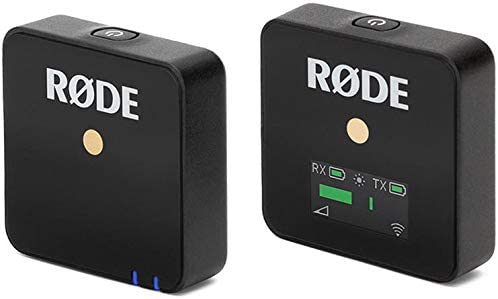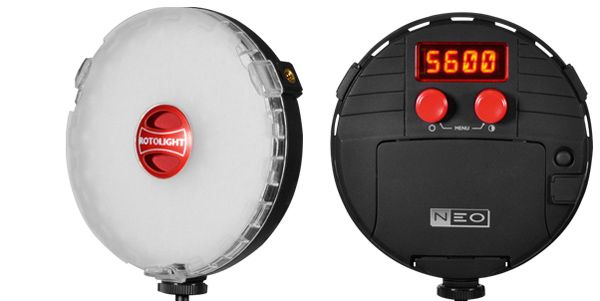If you are using Smartphones which are less than 2 years old, then they will produce high-quality videos up to 4K but typically, depending on where your audience will view the videos, 1080 HD is fine for desktop viewing and 720 HD for mobile. BrandCam gives you both options as you are ready to save & publish your videos.
Regardless of the types of videos you are producing and on which device, sound and lighting make a huge difference to the end results. Here are a few suggestions which won’t break the bank.
Microphones
For general videos including shoots where the presenter might be some distance from the Smartphone the Rode Go Wireless Mic is a low-cost ultra lite solution which is simple to use, has a 7-hour battery life and is available in a single or dual transmitter configuration and starts at around US$200 for the single option. Find out more at Rode Wireless GO II
If most of your videos are going to be Bio’s podcasts, testimonials etc and the person in the video is 1-3 metres from the Smartphone then a Rode VideoMic GO II is a directional mic with good all-round capabilities. Small and compact ideal also for blogs and if you are behind the camera and adding commentary to the video. Find out more Rode Video Mic GO II

Lighting
Lighting is one of the most important aspects of any video shoot. Lighting can be used to create different moods and atmospheres, and it can be used to highlight certain aspects of the shot. For example, lighting can be used to make a shot look more flattering, or it can be used to make a shot look more dramatic.
Lighting is also one of the most expensive aspects of a video shoot, so it is important to budget for it accordingly. There are many different types of lighting that can be used for a video shoot, and the type of lighting that you use will likely depend on your budget and the content you’re making. Here are some of our recommendations but DYOR.
On-device budget lighting:
With good all-around capabilities and very versatile. VILTROX VL-162T CRI95+ LED Video Light is worth considering Read more at Viltrox
A more expensive but excellent option is the NEO 2 and you can find details at Rotolight including where to buy in most countries.

Two or three point lighting:
Two and Three point lighting is the standard for most basic filming. Two Point lighting is just a key light and a backlight. Three point lighting includes a key light, a fill light, and a backlight. Two point lighting is generally used for interviews because it creates less of a shadow on the person’s face from the key light.
Three point lighting is used more for general shots because it illuminates the person’s entire face and body from different angles. This type of lighting is also more flattering for the person being interviewed because it eliminates most shadows.
Fancier Studios have a low-budget option which includes translucent umbrellas to help diffuse the light, plus stands, CFL bulbs, and a case. Check it out on Amazon and Studio Pro is another low budget option.
Higher-end options in the $300 to $500 range include GMV RGB Video Lights with APP Control, 50W Full Colour Studio Video Lighting Kit, Led Video Lights for YouTube Photography Lighting, 3 Packs Led Light Panel, Aluminium Alloy Shell. Also the Studio FX Kit is a slightly cheaper option.
Smartphone Rigs
Smartphone rigs are one of the most important pieces of equipment for anyone looking to improve the stability and quality of their video footage. Rigs serve two primary functions: they allow you to get more stable footage by holding onto the grips on either side of the device, and they also provide a place to attach additional accessories such as lights and microphones.
Video rigs come in a variety of shapes and sizes, but most feature a comfortable grip for holding the device, as well as an extendable arm that can be used to stabilize the camera. While rigs are not absolutely necessary for getting great video footage, they can certainly make a world of difference in terms of stability and image quality.
One of the most popular manufactures of rigs and cages is Beastgrip who also manufacture lens and other accessories. They have two versions and multiple models of each. Beastgrips are 2-handed rigs which you can attach lighting and microphones to. The other version is a Beastcage which are dicast aluminium and also accommodate accessories including lenses. You are able to screw-in a small handheld tripod to help control movement whilst shooting.
You can find a good selection of rigs ranging form $15 – $250 at iMore
ShiftCam Pro Grip at $149.00 is a different concept and is designed to make videography (and photography) more like a DSLR experience. Find out more at Pro Grip or watch the video here

Gimbals
Smartphone gimbals are becoming increasingly popular as more and more people are looking to capture high-quality video with their smartphones. A gimbal is a pivoting suspension device that mechanically stabilizes a camera, making it possible to get smooth, cinematic video footage without the need for an expensive tripod or dolly.
Smartphone gimbals are relatively easy to use and can be a great way to take your video skills to the next level. Whether you’re shooting a family vacation or a special event, a gimbal can help you capture beautiful, professional-looking footage – and they are easy to use.
The most popular Gimbals range from $125 to $599 and are available in all camera shops and online. The biggest sellers are probably
Which phone gimbal is best?
- DJI OM 4 SE – Best-value. Pros. Fairly compact
- DJI OM 5 – Most compact gimbal. Pros. Very portable
- Zhiyun Smooth Q3 – Best for built-in selfie light. Pros. Built-in LED fill light
- Joby Smart Stabilizer – Best for built-in selfie stick. Pros
- Zhiyun Crane M2S – Best for multiple devices. Pros.
Lenses
Smartphone video lenses are becoming increasingly popular, as they offer a way to improve the quality of your videos without investing in a separate camera. While the best camera phones now have multi-camera arrays that include ultra-wide, standard and telephoto lenses, it’s the main camera that has the best sensor, and using an add-on lens with this may give better results than your phone’s secondary cameras.
Add-on lenses are even more useful if you’ve picked up one of the best budget camera phones, as the camera module is often one of the first corners to be cut in order to keep costs down. There are a wide variety of smartphone video lenses available, so you’re sure to find one that fits your needs. Whether you’re looking for a macro lens for close-up shots or an ultra-wide lens for expansive landscapes, there’s a lens out there that will help you get the most out of your smartphone video camera.
Here are the two most popular brands:
Moment started way back in 2013 and now manufactures its own products and sells other leading brands. They have a Moment Community with thousands of members. Check out Moment lenses and accessories and get into some great tutorials.
Another is ShifCam which also manufactures lenses and other Smartphone video accessories.
Conclusion paragraph:
The latest top-end Smartphones are amazing cameras, and you can certainly create authentic, high-quality videos without any additional hardware but if you want to move your content creation up a level or even two then considering hardware options is the way to go. This investment will pay dividends.
